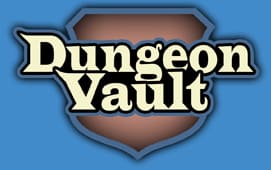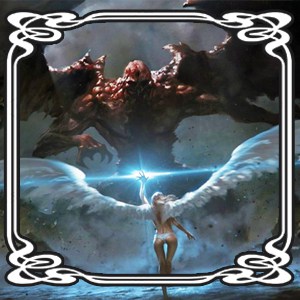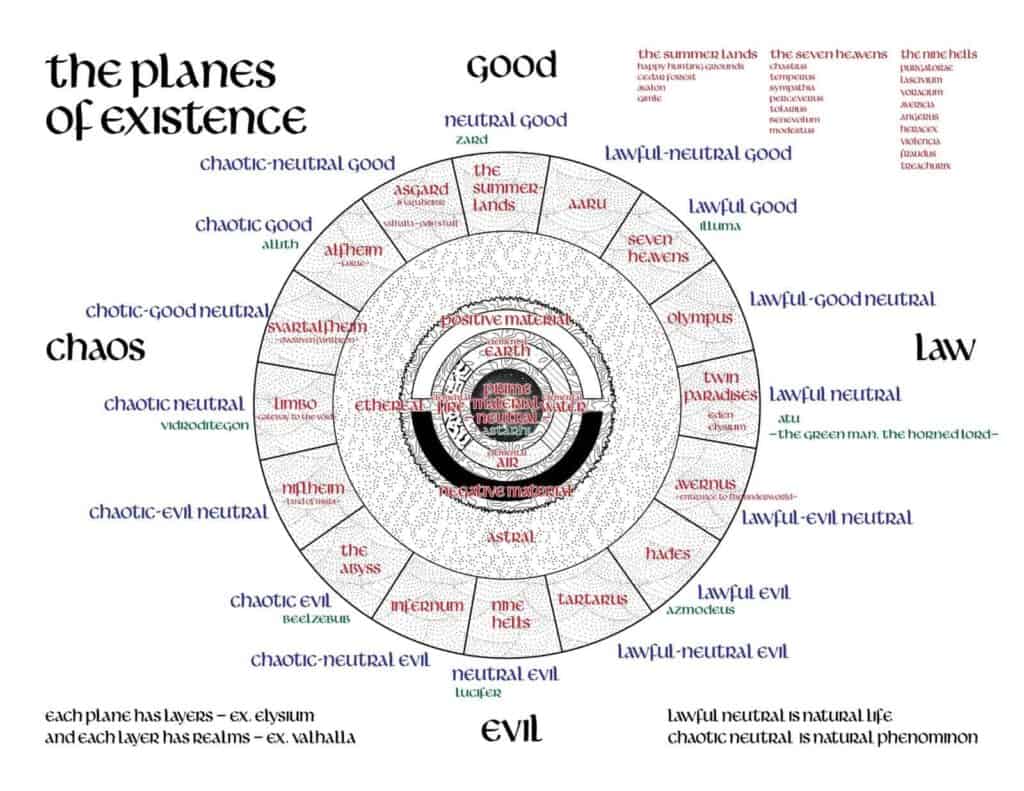
In Dungeons and Dragons, there are nine different alignments to choose from. Each describes a character’s moral and personal attitudes. Alignments greatly influence how player characters and NPCs will interact with the world and respond to events.
But how do you play D&D alignments convincingly? Players and DMs can play alignments convincingly by exploring the reasons a character has developed a certain outlook on life. What happened in a character’s life to make them think and feel the way they do? It also helps to find real-life examples to improve playing alignments convincingly.
Playing an alignment in a believable way can be a lot harder than it first seems. Sure, the Lich King is evil to his heartless core. But why? Was he just born evil or did he slowly descent into darkness?
Alignment DnD explained – How to play them
In this article, we will look at how D&D alignments are part of the very fabric of the D&D cosmos and what that means for your character. We will also discuss the heroes journey, changing alignment, and dealing with different alignments in one party.
But first, we’ll explore the nine alignments and various ways to play them!
Lawful Good

A crusader that plows through life following their morals in accordance to the law whilst perusing their beliefs, is a perfect example of a lawful good character. These characters are bound by rules, aiming to achieve the greater good.
Playing this alignment to the extreme, a character could become (or at least be described as) a zealot, a very annoying zealot.
A popular example of a Lawful Good character would be Marvel’s Captain America; he upholds the law whilst fighting for the fate of the world.
If an alignment was to be reflective of a class, Paladins would be it for Lawful Good. Paladins often serve as the best representations of Lawful Good characters, following their oaths to drive evil from the land. However, like with everything, not all Paladins fit this label – some become Oath Breakers, drastically changing their alignment.
Playing A Lawful Good Character
Playing this character effectively would require all your effort as to not accidently break the code they are bound by – ensuring that it is also being utilised for the powers of good (Or at least what they perceive to be good, for those devious Dungeon Masters out there who like to do a surprise twist).
Lawful good characters can inspire more roleplaying potential then some of the other alignments due to their contemplative nature. Your beliefs are heavily swayed to upholding and protecting your values, be they laws or codes, that you must decide how far your character can go before their actions affect them. After all, what is law and what is good might not always be the same. Play this alignment if you enjoy contemplating moral dilemmas and restrictions.
For instance, a baby giant is throwing a tantrum, destroying half a village, it sounds like a quest, right? Other characters might jump onto the chance of killing it but some Lawful Good characters might stop to contemplate whether killing a baby is justifiable – after all, it’s just a baby, it doesn’t know it’s hurting people. Every action you take has consequences; Lawful Good characters try to do their best to make sure the outcomes uphold their beliefs.
When roleplaying, Lawful Good characters tend to gel better with people that share their views but can use their compassion to speak to their enemies, even if it does ultimately end in a bloodbath. They would try to talk their opponents down rather than use force. Similarly, if combat was engaged, against non-evil foes, this character might want to avoid using lethal blows, preferring to knock their opponent out.
Tips for character development: Lawful Good characters face a moral dilemma when what is good and what is law doesn’t match. They might be able to rationalize these contrasts for a while, but at some point, they are going to have to act or lose their alignment. Since they cannot change the nature of what is good, they might have to act against the law in order to change it.
Things Lawful Good characters say:
- And remember to stay safe out there!
- Always do the right thing.
- Duty is heavier than a mountain, death lighter than a feather. (Wheel of Time)
- Under the Light, protect the innocent.
- My word is my bond.
Lawful Neutral
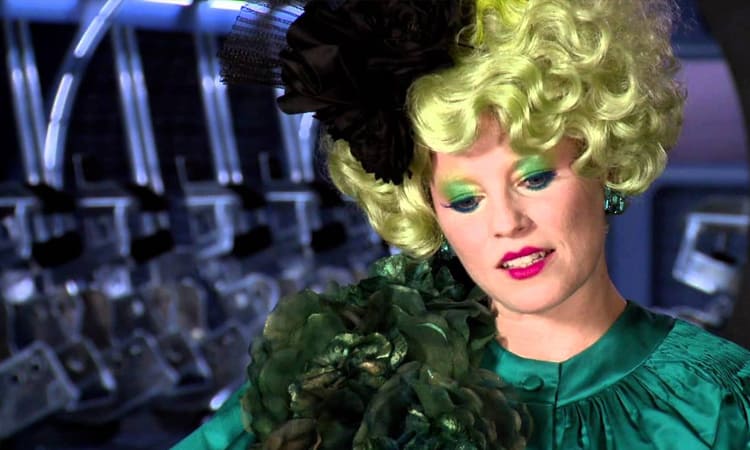
This alignment acts in accordance to their law or code but will hesitate to incorporate their views/emotions as the other alignments would; these characters can be relied upon and will honor their word without moral concern.
Lawful Neutral can be defined as the alignment of the Judge, only factoring the law and nothing else. If taken to an extreme, treat these characters as emotionless, only caring about upholding the code they live by, regardless of whether it’s morally sound or not.
Effie Trinket from The Hunger Game series would be classed as Lawful Neutral because, despite her personal views, she follows the Hunger Games traditions and supports its contestants; as per the game’s ruling. Any blind follower would be a good example of a lawful neutral character.
Playing A Lawful Neutral Character
You can have a lot of fun with this character, as long as you uphold your code/tradition, morals are out of the window. You don’t concern yourself with what’s right or wrong, what’s good or bad, only whether it’s legal or not.
Absolute lawful neutral characters may not blink twice about executing a child, should the law that the child broke state the chopping block as a reasonable punishment. This is why Lawful Neutral characters can be seen as quite cold characters in social situations, roleplaying one can be fun if you enjoy a judge-like character.
Tips for character development: Under that hard shell a world of doubt and emotion may start to plague a character but outwardly they try to show little sign of their feelings. Character development could revolve around slowly breaking that shell. What if the leader they’ve blindly followed falls of his pedestal? What if their most inner feelings contrast with the duties they have sworn to?
Things Lawful Neutral characters say:
- Good or bad, the law is the law and no man stands above it.
- Do your time, pay your dues, and your sins will be forgiven.
- My master knows best. Why then, should I concern myself with right and wrong?
- I AM the Law!
Lawful Evil

Using law/code to further their own agenda, no matter the repercussions for others, is the way of a Lawful Evil character. These characters care little for those who oppose them and will do anything within their limits to crush or repress them, as long as it’s within the law.
A real-world example of a Lawful Evil character would be Darth Vader, using his power and position to enact his will – with no regard to those he didn’t care about.
Within D&D, Devils are the epitome of Lawful Evil – they would never break the wording of their contracts but would happily use the mis-wording of a contract against the unfortunate mortal that made it.
Playing A Lawful Evil Character
If you enjoy plotting and playing at politics, this alignment is for you. Self-interested yet law obedient means that you can concoct marvelous plans to trap your foes, using the law to do the dirty work for you.
Placing your more intelligent foes into a trap can be rather amusing; just because they didn’t kill the mayor themselves doesn’t mean they can’t go to jail for it. Just make sure you know exactly how the contract is written before you sign it…
Most Lawful Evil characters try to plan and prepare for the future; they would happily let their enemy hit them first, it just means they can plead self-defense when they kill their foe.
Dungeon Masters often disallow the use of Evil alignments. But out of all the evil alignments, lawful evil is the one most easily integrated into a party that isn’t evil. If your Lawful Evil character has to follow a rule NOT to act against the party, you could be forced to work together (but you’ll probably never be friends).
Socially, Lawful Evil characters can vary; if it helps them achieve their end game, some might put up with annoying characters, even if they do end up on a pike once they have outlasted their usefulness. Some talk down to everyone, people only live to serve you, why talk to these peasants when they should be your slaves?
Tips for character development: Lawful evil characters will want to rise among the ranks following the rules to gain a better position. But what if they have risen to the top? What happens when they – as rules-followers – are now expected to set the rules? Unlike lawful good characters, they cannot use ethics to decide the rules. Using mere logic would be too neutral, and having no rules plain chaotic. Maybe a Dark Ethics is needed, and rules must be based on that which causes the greatest evil. What that looks like is for your character to explore.
Things Lawful Evil characters say:
- Lose the battle, win the war.
- Men are made to be used, rules are made to be followed.
- The law is equal for all, but only the best know how to use it.
- Society must be controlled and contained.
Neutral Good
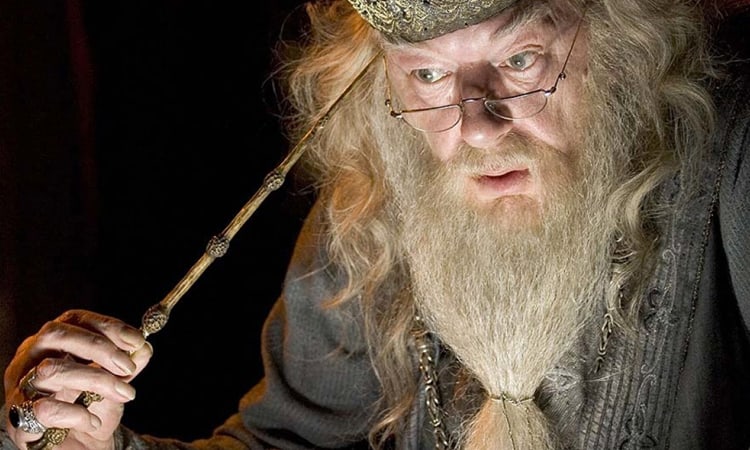
Guided by their moral compass, Neutral Good aligned characters value doing what’s right even if it means compromising their happiness or personal principles. These characters will try to actively follow laws unless they are unjust or preventative to what they believe to be good.
From the Harry Potter franchise, Dumbledore could be considered Neutral Good because of his willingness to waver school rules for Harry, Ron, and Hermione to prepare them to face Voldemort, balanced against a respect for the law when it leads to justice.
Playing A Neutral Good Character
Neutral Good characters are often the motherly figures of the group, caring for all of the people they come across. Healers are often Neutral Good.
However, Neutral Good characters can be quite a force to oppose. The most extreme instances of Neutral Good characters can be ruthless, being motivated by a good end result, some of these characters don’t care what means they employ to get there. Brutal Neutral Good characters wouldn’t be opposed to torturing their captive if it meant getting the information to save the country! Anything for the greater good.
Neutral Good characters tend to excel, fitting into just about any social environment – from sitting around a King’s table as they declare a peace treaty to lingering in dodgy alleyways, known as the place to hire suspicious people.
Tips for character development: Doing evil things for the greater good might sometimes be necessary, but those evil things can start to add up. (Especially if an evil villain is orchestrating events). Can the greater good truly justify those ‘smaller’ evils?
Things Neutral Good characters say:
- The ends justify the means for the greater good.
- Help others however you can.
- Laws and freedom are the servants of common welfare.
- Violence is always a last resort and must be outweighed by what it protects.
True Neutral

Caring little for Good nor Evil, Law nor Chaos; these characters truly only care about their own little bubble and those within it.
Ents from the Tolkien universe are prime examples of true neutral characters. Protecting their forests with no thought for anyone/anything outside them.
But being True Neutral can also be a spiritual choice for characters adhering to the balance of all forces (and alignments) in nature. As all things are. And all DnD alignments must be. Ents are also True Neutral in their balance with nature.
Playing A True Neutral Character
Playing a True Neutral character can be hard, one of the hardest out of the nine alignments in D&D. Druids may be the most compatible class to achieve a true neutral label, due to their connection with the lands. Druids generally only care for their grove, protecting it and all those who reside within it – helping those who need it and harming those who threaten the delicate balance of their land. Due to this tendency, not many True Neutral characters become adventurers.
Tips for character development: Personally, I put a spin on my True Neutral characters. These characters, in my setting, instead can see both sides of every coin – becoming avid diplomats that can reason with most people. Character development is about finding balance within as well as outside. They may adopt any course of action, be it good, evil, lawful or chaotic as long as the end-goal is maintaining balance. The real test comes once a balance is destroyed beyond repair. What will a new balance look like, and what hand will the character have in shaping that balance?
Things true neutral characters say:
- You never step into the same river twice.
- All things must be. But they must all be in a dynamic equilibrium.
- The wheel weaves, as the wheel wills.
- The universe itself is change and life itself is but what you deem it.
- Good, evil, chaos, and law, are in the eye of the beholder. There is only the now.
Neutral Evil

Though Neutral Evil characters tend to harbor high levels of malevolence, they don’t have the restless itch for violence that Chaotic Evil villains have.
Debatably, he who shall not be named (Lord Voldemort from the Harry Potter franchise) could be labeled as a Neutral Evil villain as he gave the protagonists several chances before attempting to kill them. Evil is just a means to an end for these type of characters.
Playing A Neutral Evil Character
Having a neutral character in the party with mixed DnD alignments can be really difficult. It’s just in their nature not to care about other party members. That is why the DM and player can work out what is more important to them than anything else in the world. Perhaps it’s getting rich, or avenging a murder.
Whatever they want to achieve, cooperating with the party should CLEARLY be the best way to achieve their end-goal. That way the player always has a reason to at least consider the parties opinion in character.
Using a previous example of torturing an enemy for information, this character would be all for it – hell, they may not even care if they get the information or not! Because of this attitude, those who spend any time with Neutral Evil characters tend to have a lesser view of them, so they may favor intimidation and threats over trying to bargain or trade – Might as well use your reputation to your benefit, right?
In combat, Neutral Evil characters favor lethal blows, maybe even trying exotic head explosions to amuse themselves.
Tips for character development: At some point, an evil character will achieve their main goal. Then what? Are they simply going to continue to be evil? Will they look for another goal to achieve through evil means? Or have new goals become more important that don’t match with their evil behavior? And devil forbid they’ve actually come to care for their party?
Things Neutral Evil characters say:
- Evil is a means to an end.
- Evil is the easiest way to power. I like power.
- The world is inherently evil. Good is an illusion for fools and children.
- The soul that has conceived one wickedness can nurse no good thereafter.
- One death is a tragedy; one million is a statistic.
Chaotic Good
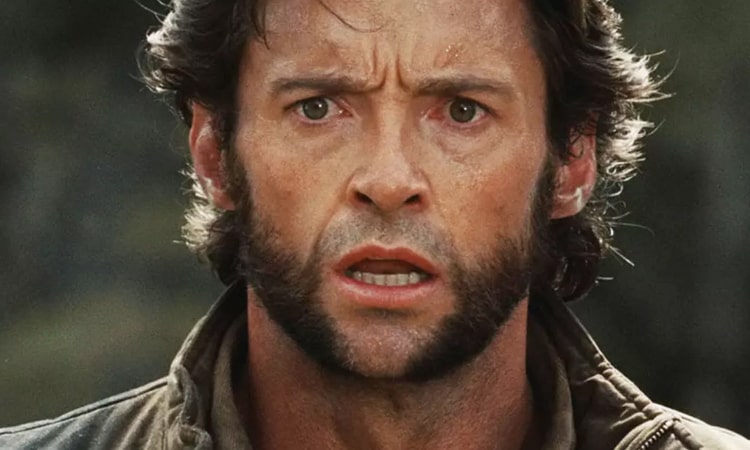
Rules are meant to be broken. Chaotic neutral characters would happily break into the museum to get the artifact that cures the villagers of dragon pox. A big difference with Neutral Good characters is that they would think of this solution first – rather than pandering over other options.
A perfect example of a Chaotic Good character would be Wolverine from the Marvel comics, he does his best to fight for what’s right whilst not caring for the rules. In fact, rule-breaking is part of the attraction when it comes to making choices.
Playing A Chaotic Good Character
Anti-heroes and vigilantes, all the perks of being good with all the perks of being reckless, who wouldn’t want to play this character? Playing this character can be a lot of fun as they can subvert the laws around them for the greater good, truly living to their rebellious nature. However, this character can easily become an annoying one, should the player prioritize their character’s thoughts and actions over others. Disrupting and pushing societal boundaries is just the average Tuesday for a Chaotic Good character and could end up getting the whole party in trouble.
Though they might play dirty, tripping or blinding their foes, Chaotic Good characters would try to avoid excess violence. They might not stop there though, if it was a notable adversary that happened to irk them, they might tie them to the nearest streetlamp in just their undies – really drilling home the point to not mess with them.
Socially, Chaotic Good characters bring an array of interesting routes to follow from the dim-witted barbarian who just wants to smash or the silver-tongued bard who knows exactly how to push the mayor’s buttons. Though they resist society’s expectations, they may just become the towns beloved hero anyway.
Tips for character development: Actions have consequences. If you push against society too often, it might push back. While that might not stop a chaotic good character, seeing a village go without food because the chaotic good wizard thoughtlessly cast fireball near the grain barn, will cause a pang of guilt. Using the reckless behavior to lay down a guilt trip is a very effective way to let chaotic good characters re-examine their D&D alignment.
Things Chaotic Good characters say:
- Stick it to the man!
- Free the oppressed.
- Be free as long as it isn’t hurting anyone else his freedom.
- Freedom is not just about accepting differences, it’s about embracing them.
Chaotic Neutral
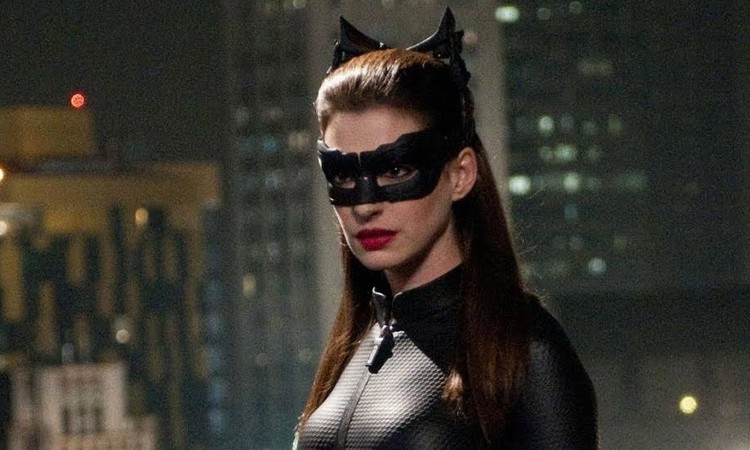
Chaotic Neutral characters are extremely self-centered, defining narcissism to a tee. They have little care for anyone else and would sell their mother to a giant for that cool trinket they’ve been wanting.
Catwoman from DC comics would be a prime example of Chaotic Neutral; she cares little for laws and morals, only that what makes her happy.
Playing A Chaotic Neutral Character
Potentially one of the most infuriating character alignments to play with, the player of a Chaotic Neutral character needs to be especially aware of the other players around the table and how they are feeling; D&D revolves around teamwork and sharing the spotlight. Chaotic Neutral characters are often especially skilled at hogging the spotlight. Make sure that you choose your moments to enact your DnD alignment. Otherwise your fellow players may start to resent you and your actions. Just remember, characters can be at odds, but players should always work together to create a better story.
Socially, these characters resent restrictions and will actively rebel against them, should they get in their way. Chaotic Neutral characters will say and do anything if it meant getting what they wanted, though they will rarely hold up their end of any deals they make.
Chaotic Neutral characters will do anything they can to get the upper hand in combat – unafraid of morals or ethics. This is especially true when it comes to captives, on the off chance a Chaotic Neutral doesn’t kill their foe, they would have no qualms torturing for information. But they would not feel particularly drawn to it. Good and evil are just ways to get what you want… and get it NOW!
Tips for character development: Because chaotic neutral characters act on their base desires, their might come a time when they have something they don’t want to lose, like the companionship of the party or a magic item. Can they just throw that away? And will they still act randomly towards a party member that has saved their life? If not, they are moving away from their original DnD alignment.
Things Chaotic Neutral characters say:
- You win some, you lose some.
- Impulsiveness is just another word for quick thinking.
- I know what I want, and I want it now.
- When you’re rich they call it eccentric.
- Am I crazy or genius? Who is to say?
- I don’t judge and won’t be judged.
Chaotic Evil

Reveling in destruction, these characters go out of their way to spread anarchy and chaos, not settling until they leave only ashes and rubble in their wake.
A popular example of a chaotic evil character would be The Joker from DC comics, infamous for spreading his crazy antics around Gotham.
Playing A Chaotic Evil Character
Playing a Chaotic Evil character involves twisting your mindset to that of concentrating on destruction; which of the decisions in front of me would ensue the most chaos and aid me with my base desires? Due to this, as stated before, most DM’s ban Evil characters (Particularly Chaotic Evil characters) unless playing an evil campaign.
Chaotic Evil characters can be played both smart and dumb in social interactions, maybe it’s just a dumb, brutish Orc that kills mercilessly for fun or maybe it’s a maniacal mastermind who doesn’t plan ahead, but still dominates by using his wit.
These characters will use any means necessary to defeat their opponents, favoring almost cinematic death scenes. They don’t use tactics but favor sheer ferocity.
Why kill someone when you can also send a message? Spear them on the townhall’s flagpole? That sends a great message! Maybe nailing their dead corpse to their favorite Inn’s door by their ears? Ooooh, how creative!
Tips for character development: Chaotic evil creatures believe that freedom should only exist for those strong enough to keep it. And sooner or later they will encounter someone stronger than them. And what is behind that shell of anger and sadism? Does the character have a soft spot it tries to desperately hide? What happens if someone finds it? Perhaps another player?
Things Chaotic Evil characters say:
- Life has no value and only the strong survive.
- Laws are for the weak, unable to defend themselves.
- I just want to see the world burn.
- Those that ask for mercy prove they don’t deserve it.
D&D Alignment Quiz
Instead of doing a multiple choice quiz, let’s dive into the psychology of your character. Place yourself in your character’s shoes. How would you respond to the following situation?
“Would you steal a cure for a disease you’ve contracted?”
No, that’s evil AND against the law! (lawful good)
No, I won’t put my needs before someone else’s freedom. (chaotic good)
No, someone else might need it. (neutral good)
Maybe, but I would have to change the laws first. (lawful neutral)
Maybe, life is part of a great cycle. Is it my time yet? (true neutral)
Maybe, if I feel like it. Who knows what I’ll do? No me! (chaotic neutral)
Yes, but I would have to force the seller to lower his price so I won’t have to pay for it. That’s not technically stealing. (lawful evil)
Yes, because my life is really the only one that matters. (neutral evil)
Yes, if I want it, it’s mine. No one dares challenge me! (chaotic evil)
The answer you’ve picked will give you some indication of your character’s alignment. Next, reread the ‘things a character of your DnD alignment would say’. Does that match your PC’s alignment?
Now that we’ve covered all nine alignments D&D, let’s look at how alignments are part of the D&D multiverse and some general pieces of advice to help you play your alignment.
Playing Alignments in the D&D Cosmos
In D&D alignments are part of the very fabric of reality. In fact, the D&D planes of existence are divided by their alignments. So yeah, kind of a big deal. Here’s how good, evil, lawful, and chaotic alignments are represented in the d&d cosmos.
Click to enlarge
The prime material plane is where your characters live. It’s your reality, earth with all its surrounding planets. All alignments are represented on this plane and their influence, is usually balanced, meaning: There is as much good as there is evil in the world, as much law as chaos.
With more influences existing on one plane characters have the freedom to choose their D&D alignment. They can choose light or darkness, chaos or law. That is why for most characters their alignment isn’t absolute. Most PCs weren’t born intrinsically evil, chaotic, etc. Evil characters can still choose to repent and come to the light side. Good character can still be seduced into becoming evil.
When you’re playing a character born on the prime material plane, realize that your alignment is relative. It’s something that you can change or at least freely choose.
The outer planes (the outer circle in the diagram) all have an alignment. For instance, the very nature of limbo is chaotic neutral. And the nine hells are the height of lawful evilness.
Creatures from these outer planes are usually born with the alignment of their plane of existence. For instance, angels from the seven heavens are lawful good. They were born that way, and any angel changing its alignment is the stuff of legends. Beelzebub – a demon – is chaotic evil and becoming a different D&D alignment is unthinkable.
What does all this mean for your character you ask? Well, these creatures all want a slice of the prime material plane. Most of the time they can’t affect the prime directly, but they can certainly try to lure characters to their side. You know that picture of a devil and angel on a character’s shoulders whispering in their ears. Those are ‘real’ in the d&d cosmos!
During the course of their adventures characters are bound to be enticed by the different alignments. Either through creatures from the outer planes or by events and moral dilemmas. At several points during the story, the characters will have to decide who they want to be in the world. And those decisions make up the hero’s journey.
Playing Alignments D&D: The Hero’s Journey
In virtually every good adventure story, the hero is confronted with events that change them forever. Frodo isn’t just on a journey to destroy the ring, he is also on a journey of personal growth.
DnD Alignments are a tool that facilitates your character’s development throughout the story. There are basically two ways characters can grow:
- The character manages to stay true to their chosen alignment in spite of outside forces trying to change them. Frodo resists the evil power of the ring.
- The character is changed by events and adopts a different alignment. A character might start out as a lawful good paladin and end up an evil blackguard who has abandoned his oaths in favor of evil.
How players decide to handle events throughout a campaign determines their hero’s journey. And it is the journey of each hero in the party that makes the story interesting.
You don’t have to decide ahead of time what your hero’s journey is going to be. Part of the fun of d&d is finding out. But it is good to be aware of the choices you have as a player, and of the dilemmas you choose to present as a DM.
Alignments in D&D should be used by the player as a guide to how to play their character – not to be used to restrict their choices. Some DMs and players get upset over alignment changes, thinking they aren’t playing their characters ‘the right way’. But that’s the wrong mindset! Don’t be afraid of alignment changes. It just means a character has evolved in a meaningful way. In fact, I feel that if I never challenge the characters’ assumptions of who they are, I’m not doing the best job as a DM.
Playing D&D Alignments and Backstories
Roleplaying your alignment can be difficult, especially if you’re new to roleplaying games. Asking the right questions about alignment and providing fitting answers will give your character depth and believability; that is especially important when playing the diverse alignments that Dungeons & Dragons has to offer. Truly fleshing out your character’s background is a great step for helping you roleplay your DnD alignment; by detailing your character you can get deeper into their mindset and really think about the justifications of their actions.
“Todd, the Tiefling Paladin, refuses to compromise when it comes to the discussion of killing the Half-Elf that butchered a small tribe. Why? Because he’s Lawful Good? That doesn’t sound half as compelling as: When he was young, Todd committed similar actions. He believed his demon heritage made him inherently evil, but it was just his slavers taunting him. When he escaped, he killed them all. He stumbled upon a wandering cleric, devoted to helping him see how much good he can spread. Because of his word to his mentor, he refuses to kill evildoers as he believes everyone can be redeemed, much like himself.”
By just creating that little background scenario, you have a foundation of information to build upon, not only adding to your alignment but to your overall approach to playing your character.
Playing Alignments in D&D Parties
D&D parties consist of a diversity of characters. And even though they act together, they all have different dreams, values AND alignments. And they are all on a different hero’s journey. For instance, the Fellowship or the Ring all traveled to Moria, but they were not on the same hero’s journey. So how do you play alignments in D&D parties without breaking up the group?
We need people who are different from us to truly know ourselves. Use the differences in a party to play off each other; not to destroy the party. For instance, Frodo uses the contrast with Gollem to understand the nature of compassion. And his commonalities (both have carried the ring) to understand the nature of empathy.
Conversely, Boromir’s failure split up the party. While this works for the book, in D&D you don’t want to split a party up over DnD alignment differences. Inevitably, as characters change and grow, each character in a party will be pulled into a different direction. That’s why the DM (and players) need to provide very strong reasons for characters to stay together. After all, Frodo and Gollem didn’t want to stick together, but they had believable reasons for doing so.
DMs can also ask players to think about keeping the overall story on track, and not just think about ‘what their character would do’. So characters in a party can bicker or even not be on speaking terms, but they’ll serve the story better if they don’t split up the party. If players do want to split up the party over alignment differences ask: Does it serve the story?
Some common ways to bind a party together are:
Survival: The party needs each other to live.
Common goal: They all want the same thing for different reasons.
Revenge: Maybe they all lost someone they love and respect.
Mystical connection: They fates are somehow intertwined.
Duty: They feel obliged to work together.
Friendship: They see their differences as an enrichment.
Basically, you can think of alignments DnD as the force that drives party members away from each other. This has to be balanced by a force that keeps the party together. So nothing has gone wrong if the characters’ alignments lead them in different directions. Overcoming those differences and becoming a team is part of the drama of a good story!
In conclusion, alignments are a tool for role-playing and character development. Tools are meant to make your job as a DM or player easier. So only use alignments if they help you drive the story forward.
By Daniel Ball & Paul Camp
